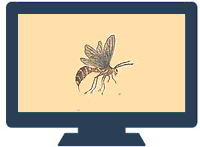Entomology, Department of
Date of this Version
2015
Document Type
Thesis
Abstract
Life Cycle:
Egg Must be exposed to water to hatch
Larvae Live in aquatic habitats
Pupa Stay near the surface of water to breath
Adults: Only females feed on blood; Males feed on nectar
Public Health •Besides being a nuisance, they cause numerous health hazards to humans (and other animals) •In some cases, they may cause severe allergic reactions •Diseases they transmit: •Eastern Equine Encephalitis •Japanese Encephalitis •La Crosse Encephalitis •St. Louis Encephalitis •West Nile Virus •Western Equine Encephalitis •Dengue Fever •Malaria •Rift Valley Fever •Yellow Fever
Mosquito-Borne Diseases in Mississippi and its Vectors •Chikungunya Virus •Aedes species •Eastern Equine Encephalitis •Culexand Aedes species •St. Louis Encephalitis •Culex species •La Crosse Encephalitis •Aedes species •West Nile Virus •Culex species •Malaria •Anopheles species
Included in
Entomology Commons, Infectious Disease Commons, Preventive Medicine Commons, Public Health Commons


Comments
Master's Project, Department of Entomology, University of Nebraska-Lincoln.
Copyright (c) 2015 Ryan J. Rodriguez
Download file is pdf; PowerPoint slides attached (below) as related file.